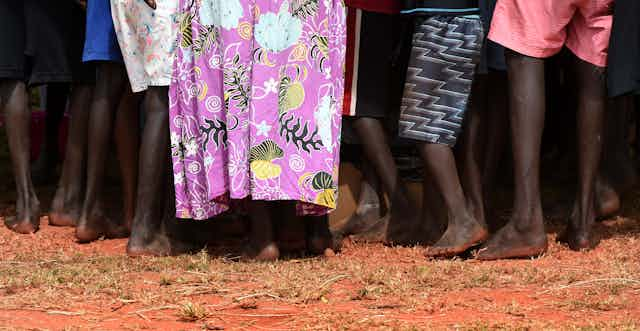Last week the government released the Aboriginal and Torres Strait Islander Suicide Prevention Evaluation Project report, which gave recommendations to reduce the high rate of suicide among Aboriginal and Torres Strait Islander people.
Minister for Indigenous affairs Nigel Scullion said the government welcomed the report with a very heavy heart. And it is with a heavy heart I write this response.
There are many factors contributing to Indigenous suicide, occurring in a wide variety of contexts. This combination creates a major challenge for the report’s authors, who are to be commended for tackling what is one of the most tragic crises of our time.
No document can answer every question on Indigenous suicide, and this report doesn’t presume to do so. It does recognise that no two Indigenous suicides are identical, then skilfully identifies common themes for informing responses that have the potential to save lives.
The report’s recommendations
The authors acknowledge there is surprisingly little evidence about what works for Indigenous-specific suicide prevention; hence their mandate to write the report. In a sense, given this lack of an evidence base, they are trailblazers. This report has the potential to be the catalyst for positive change for Indigenous Australians.
First, the report’s authors note the association between sexual abuse and increased risk of suicide. This is something many are reluctant to do, but this association is one piece of the puzzle that must be discussed. The report notes rates of sexual abuse are high in out-of-home care such as orphanages and foster homes, and this disproportionately affects Indigenous children. Measures need to be taken to prevent sexual abuse – whether it be in the community or in out-of-home care.
Second, recognising the great diversity among Indigenous Australians, the report provides recommendations flexible enough to be readily adapted for local implementation. For example, the report emphasises the need for community-led programs (recommendation 2), as well as the significant role of Aboriginal Community Controlled Health Services (recommendation 10).
Third, while there will always be a need for crisis intervention for suicide, it is reassuring the authors frequently mention “upstream approaches” which include improving such social determinants of health as sense of belonging, stability, and hope. Prevention is the best cure for suicide.
Employment is an important factor, too
Though not covered comprehensively in the report, upstream approaches should be extended to include employment. Suicide results from feeling hopeless and helpless, and employment plays a significant role in restoring hope and creating opportunities for a meaningful life. When adults are employed, communities are more vibrant. The importance of jobs cannot be over emphasised.
A significant contributor to the report, Gerry Georgatos, said:
We have to restore hope. And to restore hope, we have to actually create opportunity for people in these communities.
Indigenous politician, Alison Anderson, says about jobs:
It is not just about the money […] It is about status and respect, about responsibility and dignity.
Having a job is more than just an income – it contributes greatly towards meeting fundamental human needs and attaining sound mental health.
A major challenge in combating suicide is how to respond to those locations, often remote communities, where employment opportunities are limited or even non-existent. Where unemployment rates are high, there is emotional pain, and suicide can be seen as the only solution.
Creating a narrative of empowerment
The report stresses the need to “acknowledge and understand the devastating and enduring impact of the colonial legacy on Indigenous people’s contemporary lives”. While it’s fine to acknowledge historical injustices, it’s disempowering to let this form the overarching narrative of our lives.
I have argued elsewhere we’re not victims of the past, but victims of our view of the past. Let’s celebrate Indigenous success to create a positive and empowering narrative of our Indigenous people.
There are countless successful Indigenous people such as Bess Price, Stan Grant, and Marcia Langton, as well as the Indigenous contributors of the report, who provide proof the legacy of colonisation doesn’t need to hold people back.
Finally, the report mentions culture. For example, it says Indigenous culture should be taught in schools. Cultural appropriateness is important in some instances, but to reduce suicide and improve overall health, Indigenous Australians need a worldview that helps them access modern services, clean water, fresh food, quality education and most importantly, opportunity to contribute to the well-being of others.
Ultimately, Indigenous Australians need real access to the opportunities other Australians take for granted. The recommendations in this report can help Indigenous Australians attain those opportunities.

